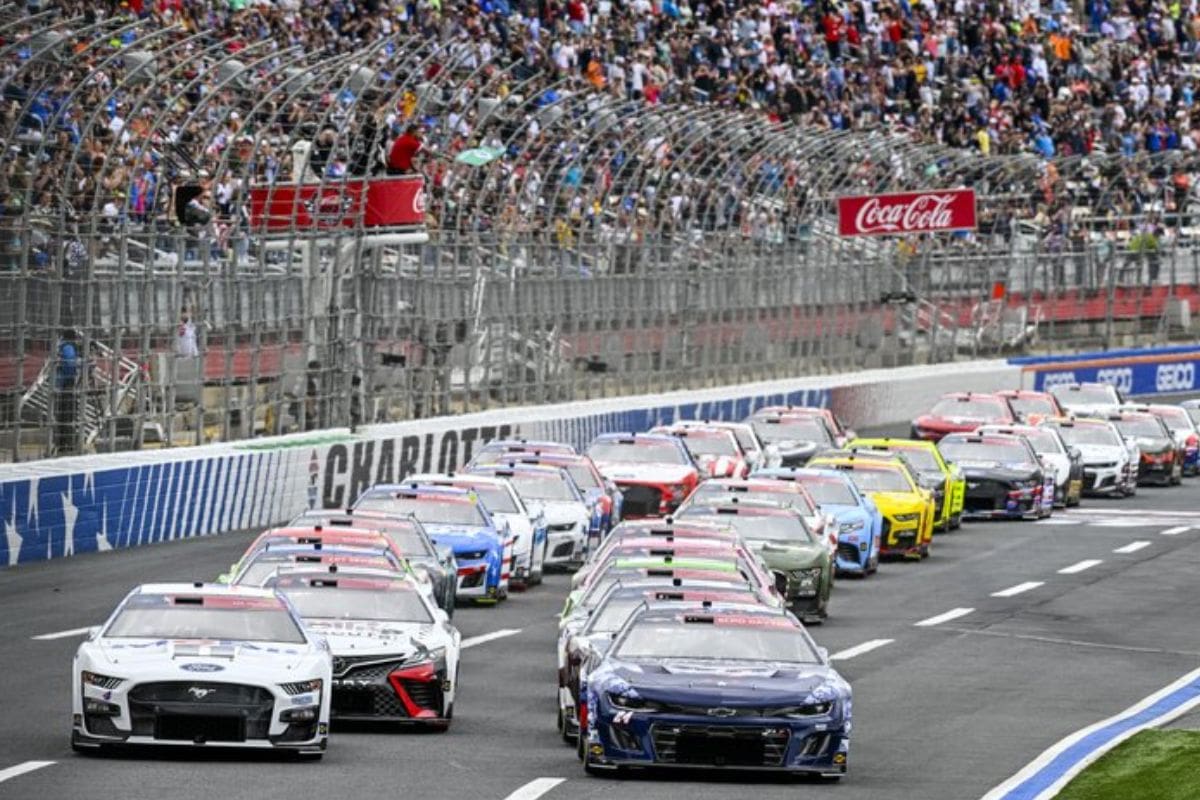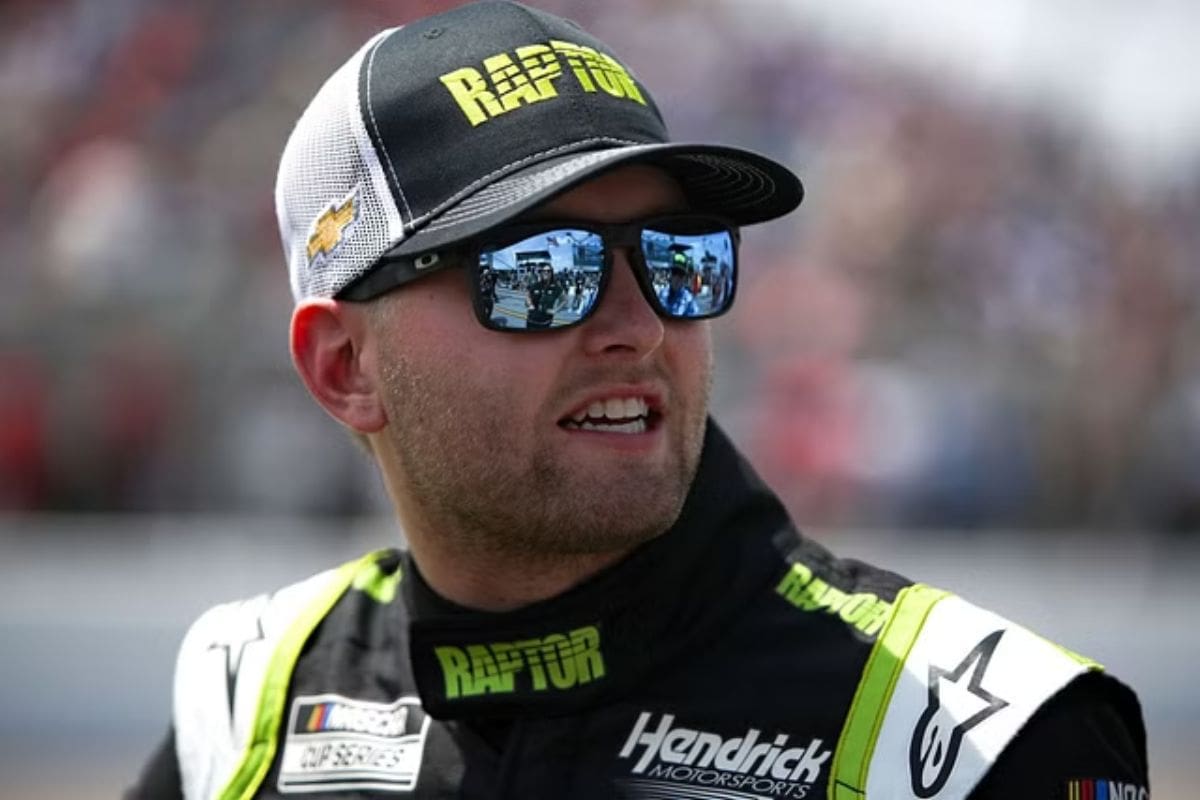Ryan Preece Addresses Indy Failure: Ryan Preece‘s frank remarks following the Indy race, particularly his assertion that “it just died,” encapsulate the unpredictable and often unforgiving nature of motorsport. His experience sheds light on the mechanical intricacies that can dictate a driver’s fate and invites a broader analysis of how such failures resonate within the competitive dynamics of NASCAR. As fellow drivers weigh in with their perspectives, it becomes evident that Preece’s challenges may reflect a larger narrative about resilience and support in the racing community. What does this incident reveal about the strain faced by drivers and teams similarly?
Key Highlights
- Ryan Preece described his car’s mechanical failure during the Indy race with the phrase, “It Just Died,” indicating significant performance issues.
- The inconsistent throttle response hampered Preece’s ability to compete effectively, showing the impact of technical challenges.
- Preece’s struggles at Indy reflect broader challenges within Stewart-Haas Racing, particularly regarding team cohesion and performance consistency.
- Fellow drivers, like William Byron and AJ Allmendinger, highlighted the chaotic nature of racing dynamics, contributing to the overall incident.
Current Situation of Stewart-Haas Racing
Stewart-Haas Racing is navigating a shifting phase, as three of its four drivers have secured future opportunities in NASCAR. Yet the lingering uncertainty surrounding Ryan Preece highlights the team’s ongoing challenges. This change reflects a broader narrative of stability contrasted with uncertainty within the organization. While the successful placements of Kevin Harvick, Chase Briscoe, and Aric Almirola indicate a tactical retention of talent, Preece’s precarious position raises questions about the depth of the team’s driver development and management strategies.
The recent turmoil, particularly during the Brickyard 400, accentuates the complexities facing Preece. Entangled in a series of wrecks, he exemplifies the unfortunate plight experienced by a driver seeking consistency in an increasingly competitive environment. This incident not only impacts his immediate career but also reverberates throughout the SHR ecosystem, as it highlights the necessity for robust performance and adaptability amidst adversity.
As SHR navigates this crucial point, the focus on cohesion and collective performance becomes paramount. The team’s ability to create a supportive atmosphere for Preece will be critical in determining his path, as well as the overall morale within the camp.
The contrast of established drivers with a newcomer struggling for recognition reinforces the idea that success in NASCAR is not solely predicated on talent but is also influenced by circumstances, support structures, and the ability to learn from setbacks. Therefore, the future of Stewart-Haas Racing will hinge on its collective resilience and ability to harness potential amid uncertainty.
Ryan Preece’s Perspective on the Incident
In reflecting on the chaotic incident at Indianapolis, Ryan Preece articulates a mix of frustration and understanding, emphasizing the mechanical challenges that contributed to the wreck rather than placing sole blame on himself.
As the race unfolded, Preece’s vehicle encountered considerable technical difficulties that limited his ability to navigate effectively, which he openly shared in a recent interview.
“At that point in time, you can set you know, 15, 20, 25% – whatever the reason, it was weird. Chase Briscoe ran out of fuel earlier this year at Nashville and something that he said was that a wide open throttle, the motor would fall out of place, and die. But at 20-30%, you can get it running. Well, that was what happened.”
“Tony had said that, Hey, they’re trying to get to the white. See if you can get out of the way. So I tried throwing it in reverse to back myself up toward the wall and off the racetrack, but it just died. So that was kind of…all those things happening in a span of ten seconds which felt like minutes.”- Preece
Preece explained that the throttle response was inconsistent, mirroring a similar situation faced by his fellow driver, Chase Briscoe. The mechanical failures culminated in a crucial moment during the race, leading Preece to become inadvertently involved in the multi-car wreck that sidelined several competitors, including William Byron.
View this post on Instagram
Key points from Preece’s perspective include:
- Mechanical Challenges: Preece’s car experienced throttle issues, which he argues were essential in the incident.
- Split-Second Decisions: The rapid sequence of events left him with little time to react appropriately.
Preece’s reflections reveal a broader understanding of the complexities inherent in racing, where split-second decisions and mechanical reliability are intertwined.
While the incident undeniably impacted several drivers, Preece’s insights highlight the often-overlooked role of technology in determining outcomes on the track.
William Byron’s View on the Incident
William Byron expressed his frustration over the incident at Indianapolis, attributing the wreck to the erratic driving of Chase Briscoe in the lead-up to the crash. Byron characterized Briscoe’s movements as “crazy,” suggesting that the No. 14 car’s unpredictable actions considerably contributed to the chaotic situation. Specifically, Byron noted that Briscoe’s aggressive positioning forced him to lift off the throttle, ultimately placing him in a vulnerable position that resulted in being rear-ended.
“The No. 14 was just being a squirrel back in the pack. He drove up in front of me. I had to lift way off the corner and I got run over.” – Byron
Starting the race in fourth position, Byron’s disappointment was palpable. The Brickyard 400 represents a prestigious opportunity, and Byron felt that his chances were compromised by another driver’s reckless behavior. His analysis highlights a vital aspect of racing dynamics; the interplay between driver decision-making and situational awareness can drastically alter the outcome of a race.
Byron’s critique of Briscoe emphasizes a broader discussion within the NASCAR community regarding driving etiquette and the responsibilities of drivers, particularly in the lead-up to pivotal moments in a race. While the incident involved multiple participants, Byron’s focus on Briscoe’s erratic driving demonstrates the importance of maintaining control and predictability in competitive environments.
AJ Allmendinger’s Perspective
AJ Allmendinger offered a unique perspective on the Indianapolis incident, attributing the chaos to the inherent risks associated with restarts, particularly following a caution period.
In his analysis, Allmendinger highlighted how drivers often adopt an aggressive mentality during these critical moments, especially those positioned further back in the field. This urgency to regain lost track position can lead to unpredictable outcomes, as was evident during the incident at lap 74.
He remarked, “Kind of the story of the year: wrong place, wrong time,” capturing the unpredictability that characterizes racing dynamics.
- Aggression During Restarts: Drivers in the middle and back of the field frequently push harder to recover their positions, increasing the likelihood of collisions.
- Caution Period Effects: The aftermath of a caution often creates heightened tension that influences driver behavior, resulting in erratic maneuvers.
Ryan Preece’s Situation
Ryan Preece finds himself at a pivotal moment in his career, as he navigates the aftermath of the Indianapolis incident while grappling with the need to restore his reputation within the NASCAR community. The fallout from the race has left him under scrutiny, yet it is notable that his fellow competitors do not share the blame often directed at him. This dynamic suggests a level of respect among peers that Preece must take advantage of, as he sets out on an expedition to regain his footing in a highly competitive environment.
Despite the support from his contemporaries, the strain to perform intensifies. Preece must adopt a proactive approach, carefully analyzing his racing strategies and execution to guarantee that he can deliver consistent results. The need for a strong comeback is paramount; a series of lackluster performances could further entrench negative perceptions, undermining his potential for future opportunities.
Moreover, Preece’s situation highlights the delicate balance between personal accountability and external perceptions. He must utilize his resilience, turning the adversity of the Indianapolis race into a compelling narrative of growth and resolve. Building on the fellowship he has with fellow drivers, Preece should focus on fostering relationships that can support his comeback.
News in Brief: Ryan Preece Addresses Indy Failure
The challenges faced by Ryan Preece during the Indy race highlight the inherent unpredictability of motorsport, where mechanical failures can drastically alter outcomes.
Preece’s frank expression, “It Just Died,” encapsulates the frustrations of drivers confronting unforeseen obstacles.
Support from fellow competitors, such as William Byron and AJ Allmendinger, emphasizes the solidarity within the NASCAR community.
Ultimately, this incident serves as a reminder of the delicate balance between skill and external factors that define racing at its highest level.
ALSO READ: Ryan Preece Refuses to Blame Weather Excuse After Pocono Race Disappointment



